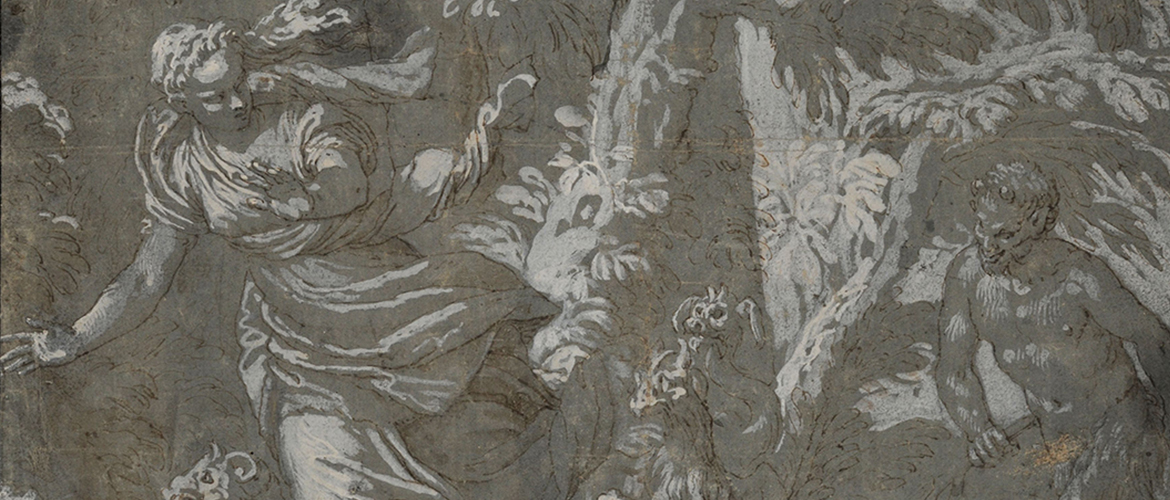Student drawings
On receiving royal recognition in 1648, the Académie Royale de Peinture et de Sculpture introduced student exercises based on studies from life or from the antique. In addition to this initial teaching, in the 19th century, special competitions were held, on perspective (in 1813), anatomy (in 1855), history and archaeology (in 1867), and ornamentation (in 1873). The medals and many prizes (Bridan, Fry, Fortin d’Ivry, Huguier, Talrich, Heuzey, Jauvin d’Attainville, and so on) received by the youthful participants were accompanied by statutory deposits to the collections. The reproductions linked to the Prix de Rome complete the overview of this approach, considered academic. Following the abolition of the competitions in 1968, other awards were introduced, including the Prix Mouflet (1981), the Prix de Fondation de dessin (1999), and the Prix de Dessin Contemporain (2008). Today the connection to teaching is maintained by regular donations from professors and students.
Master drawings
The collection has more than 20,000 Italian, Northern, and French works, dating from the Renaissance totoday. The biggest names are represented: Leonardo da Vinci, Michelangelo, Dürer, Rubens, Rembrandt, Poussin, Géricault, Ingres, Baselitz, and more. Major donors, sometimes artists themselves, have contributed to the collection’s development, such as Jacques-Édouard Gatteaux, Joseph Lesoufaché, Jean Masson, and more recently Mathias Polakovits. This momentum continues today, thanks to the association Le Cabinet des Amateurs de Dessins de l’École des Beaux-Arts, created in 2005, to the generosity of the professors and the young artists, but also to assistance from the Ministry of Culture’s heritage fund. Alongside major acquisitions in the field of antique drawings, the collection has a particularly active policy in the field of contemporary drawing, with recent donations from Anna Boghiguian, Erik Dietman, Dominique Gauthier, Annette Messager, and Georges Wolinski. Since its launch in 2005, the Cabinet Jean Bonna-Donation Mathias Polakovits has presented three annual exhibitions accompanied by scholarly catalogues and study booklets, presenting the various aspects of Beaux-Arts de Paris collection, which reflects the institution’s pedagogic mission.
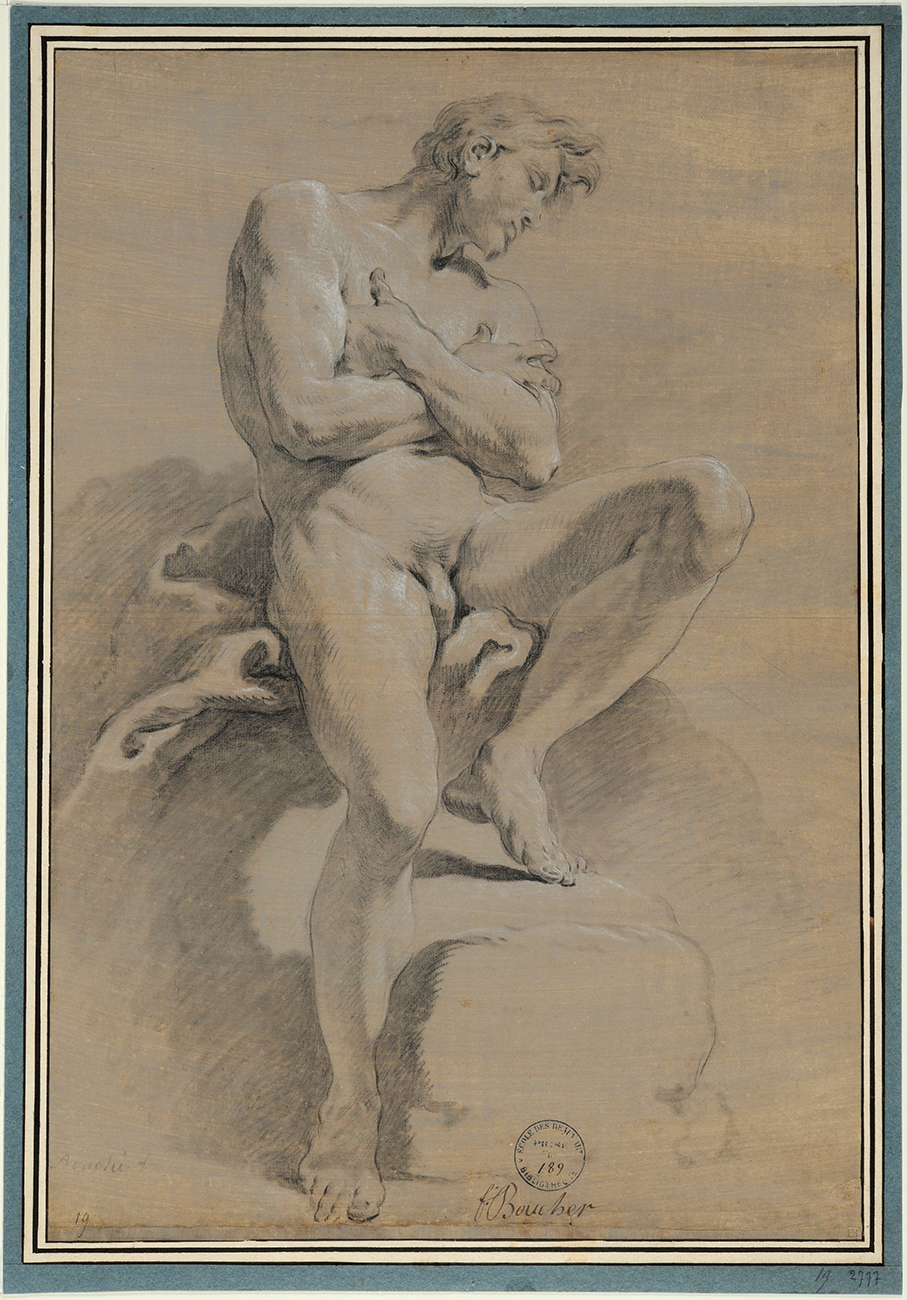
François Boucher, Homme assis, les bras croisés, Pierre noire, lavis d’encre de Chine, rehauts de blanc sur papier préparé légèrement rosé, H. 55 ; L. 37,8
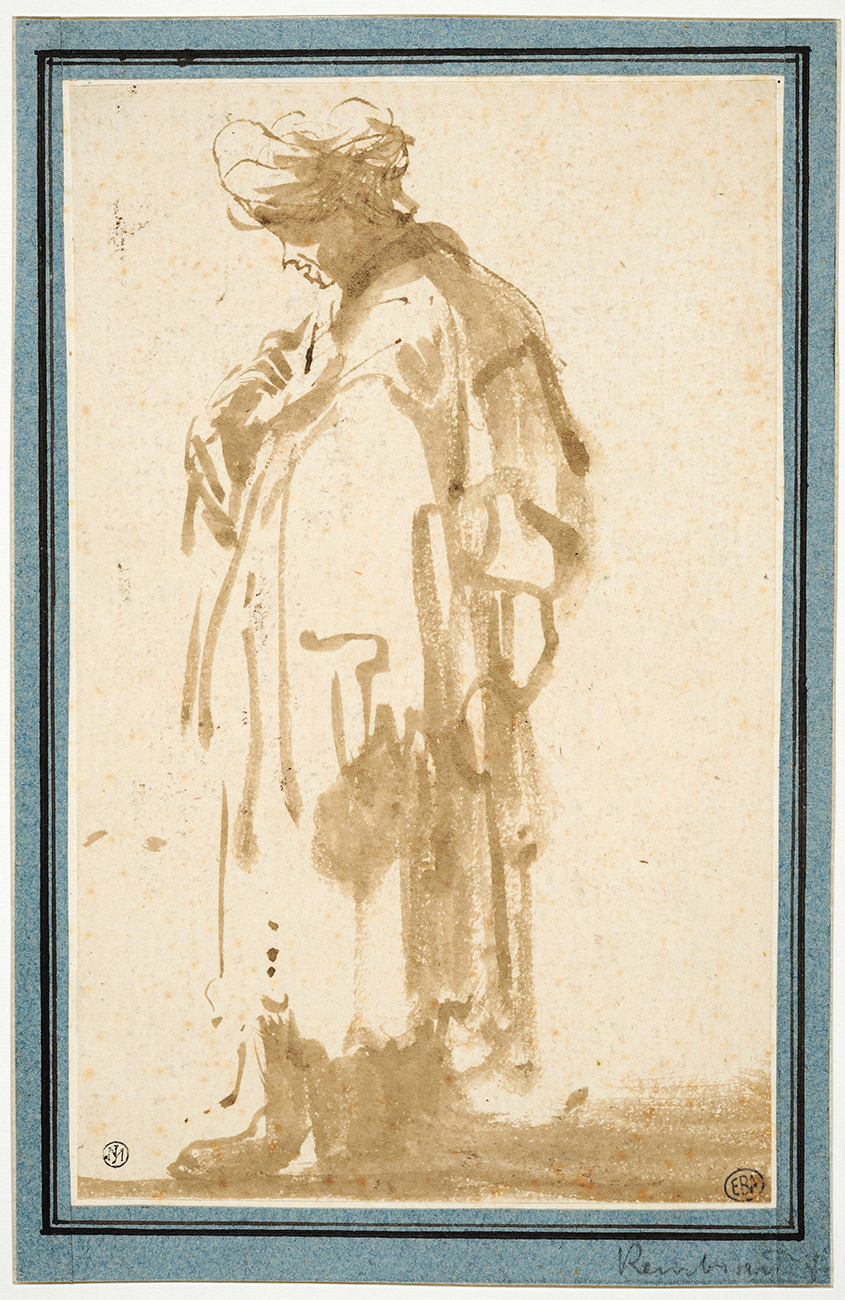
Rembrandt van Rijn, Homme oriental debout, de profil à gauche, Pointe de pinceau, lavis brun, H. 17,3 ; L. 10,8
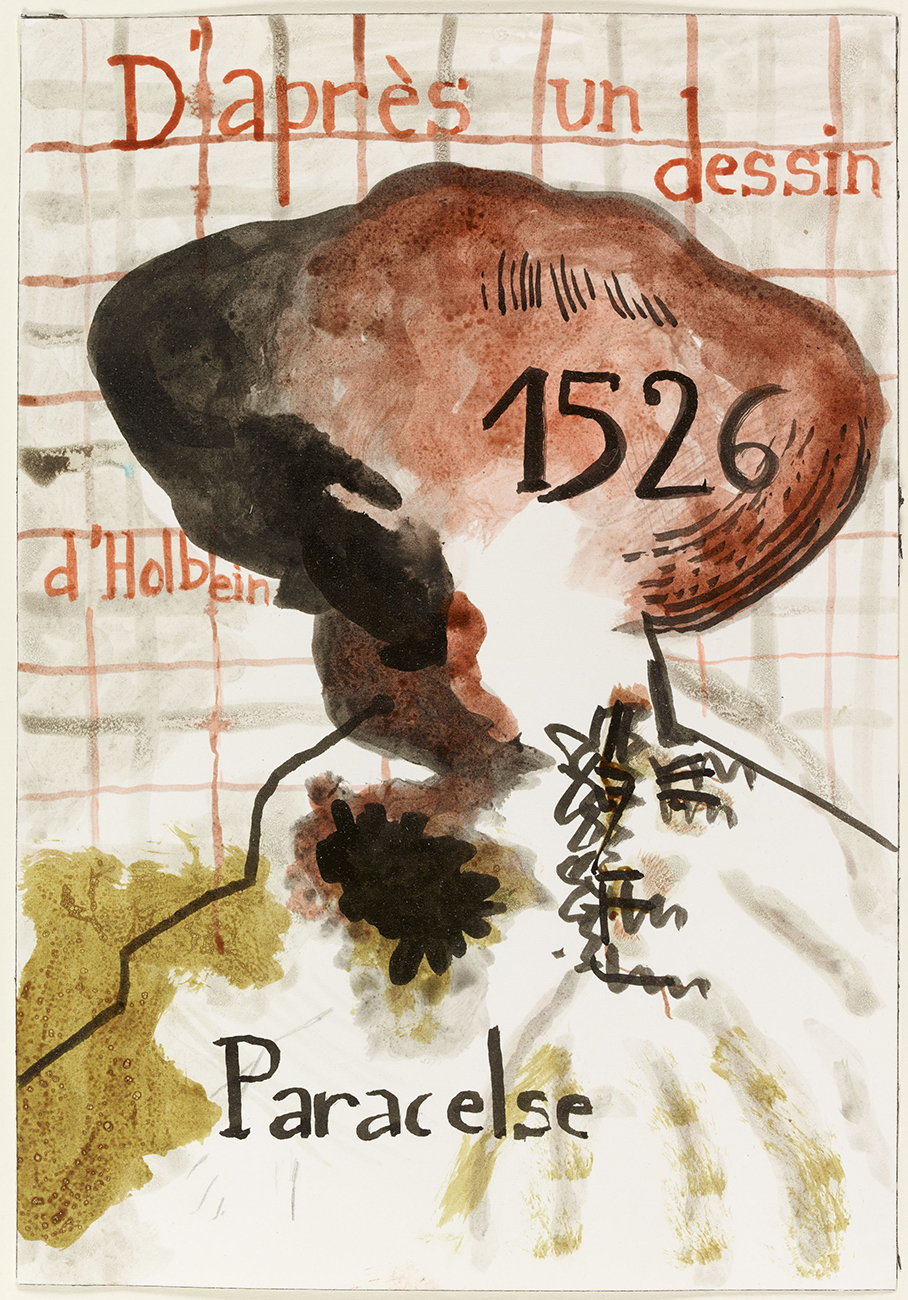
Jean-Michel Alberola, D’après Holbein, Pinceau, encre de Chine et aquarelle, 1996, H. 26 ; L. 0, 18
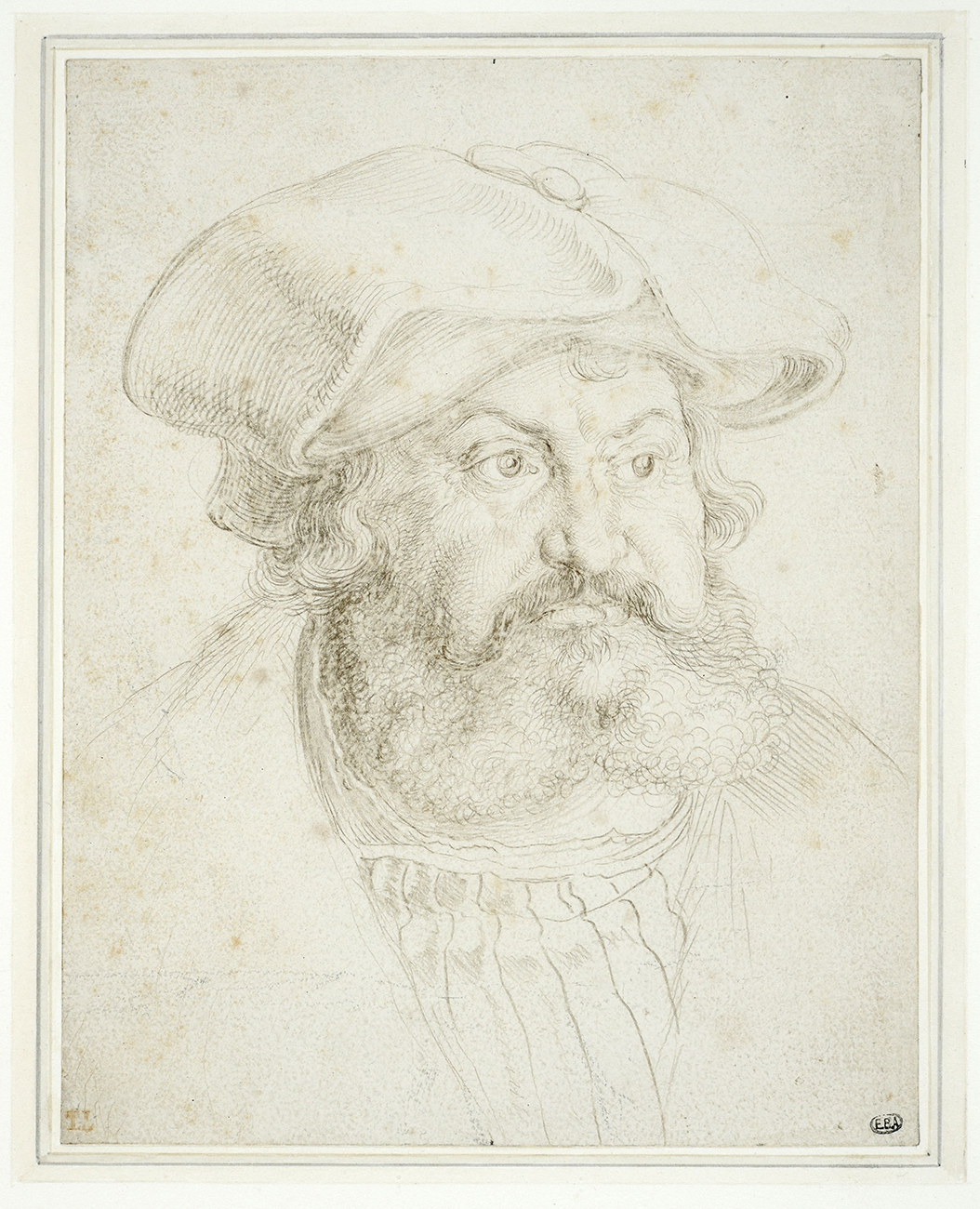
Albrecht Dürer, Portrait de Frédéric de Saxe, Pointe de métal sur papier légèrement rose, H. 17,8 ; L.14
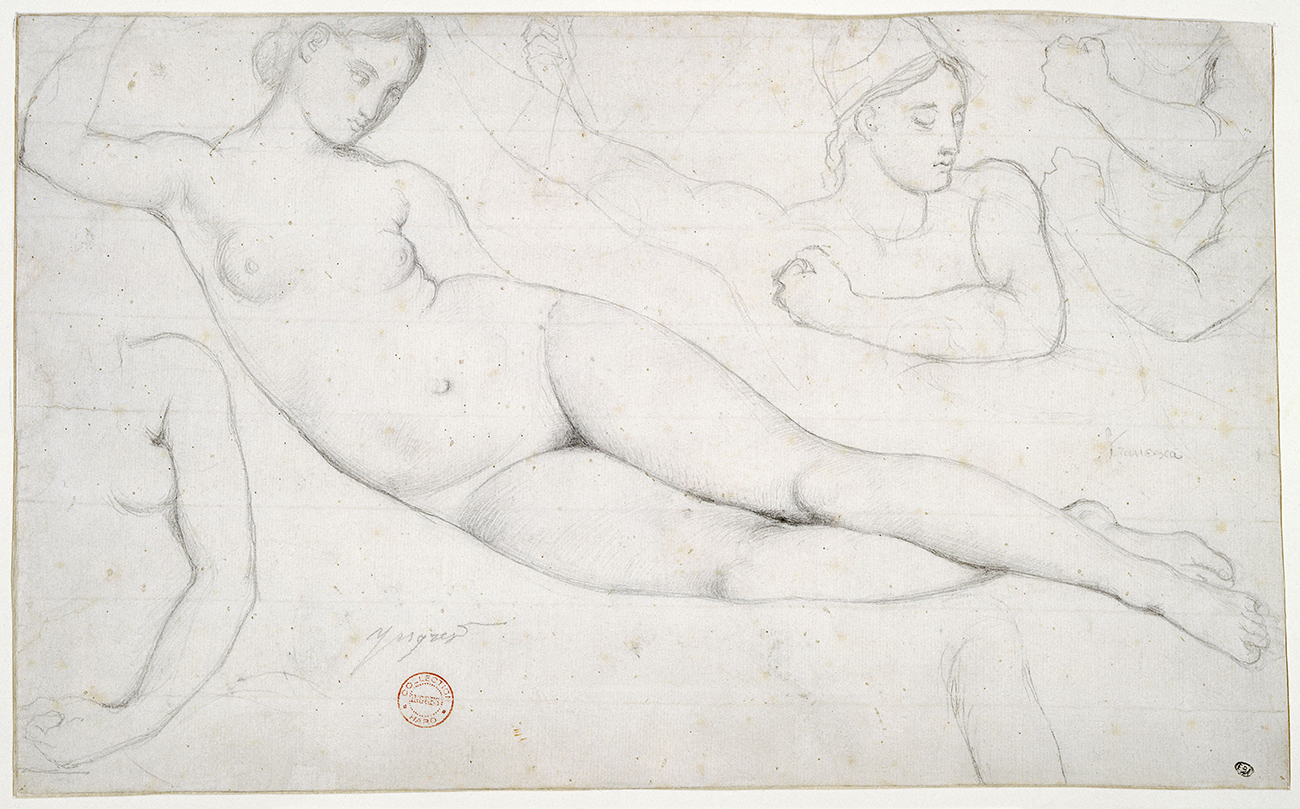
Jean-Auguste-Dominique Ingres, Femme nue couchée et études de têtes et de bras, Graphite, H.31 ; L. 34,3
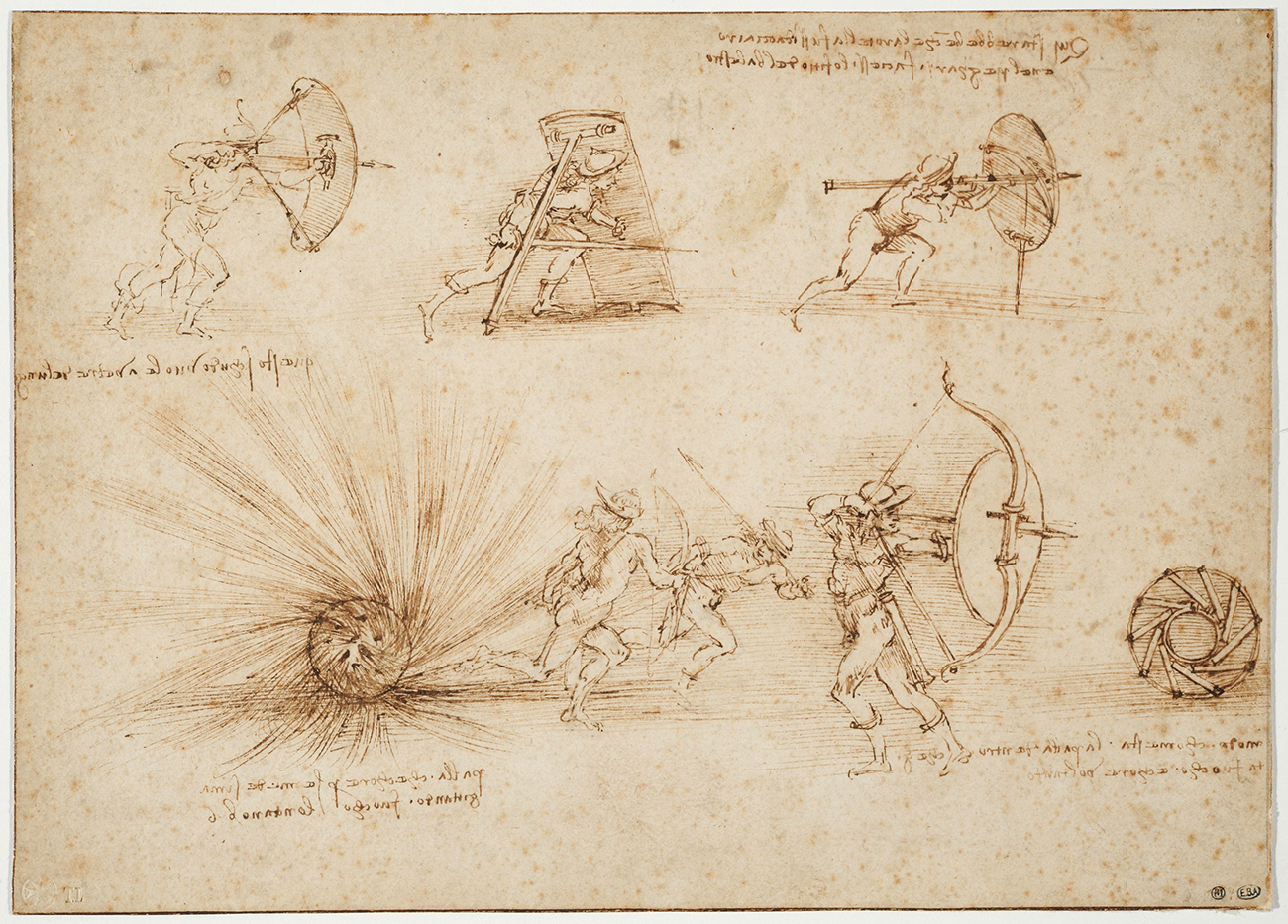
Léonard de Vinci, Études de balistiques, Plume, encre brune, H.20 ; L. 28
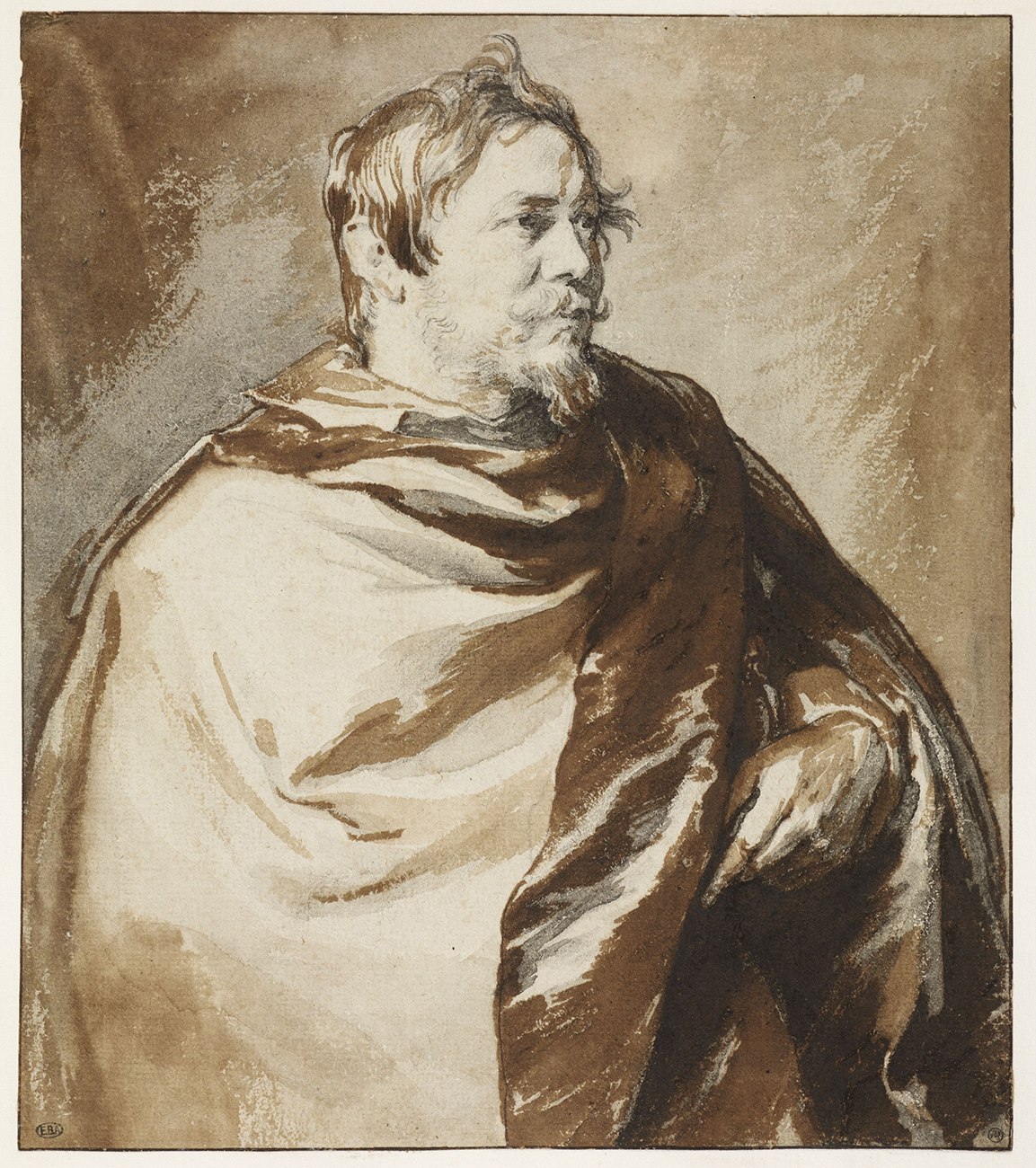
Anton van Dyck, Portrait de Gérard Seghers, Pierre noire, lavis brun et d’encre de Chine, H. 22,7 ; L. 19,8
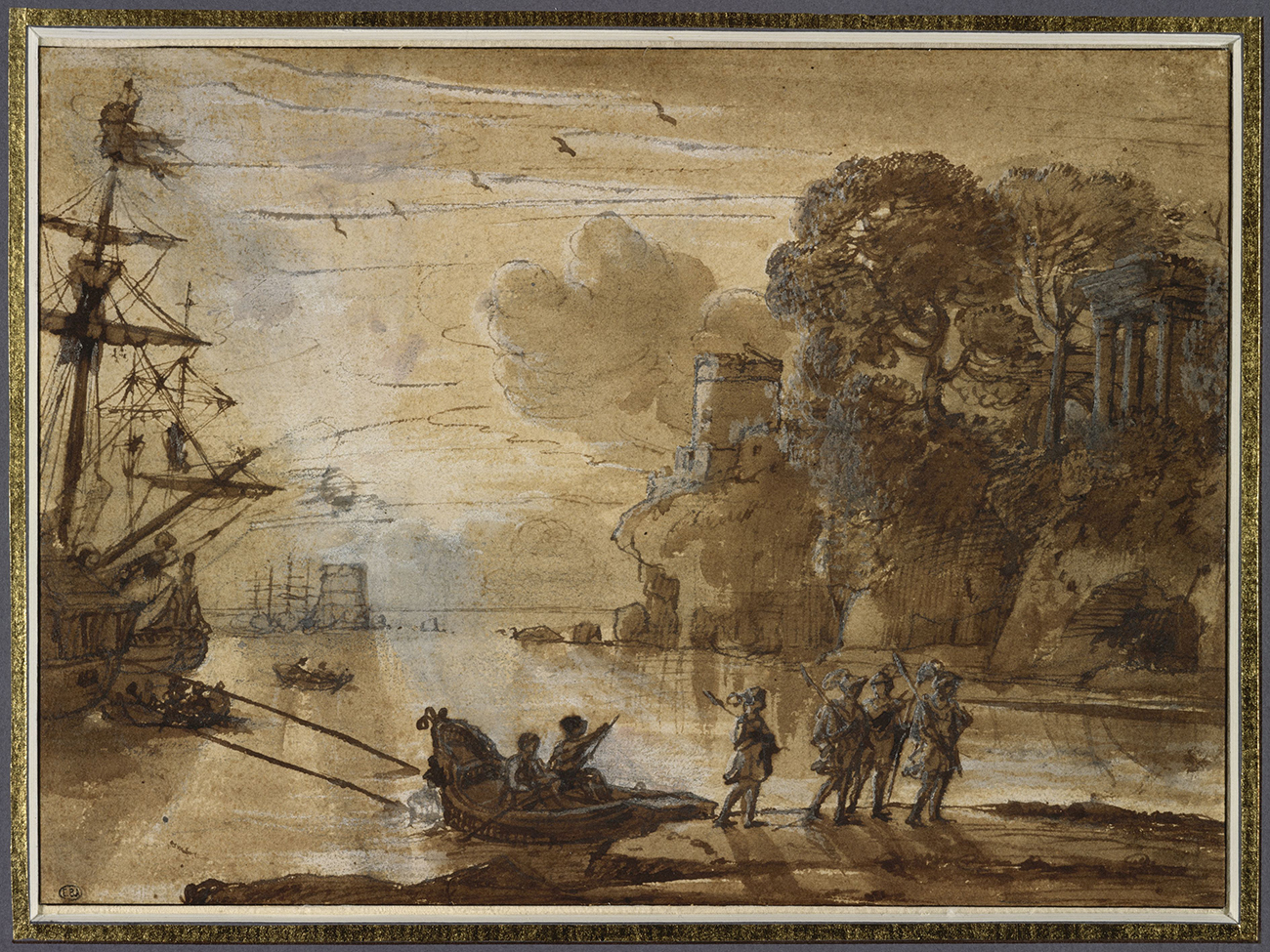
Claude Gellée dit Le Lorrain, Le débarquement d’Énée, Graphite, plume, encre brune, lavis brun et rehauts de blanc légèrement rosé, H. 18,5 ; L. 25,8


